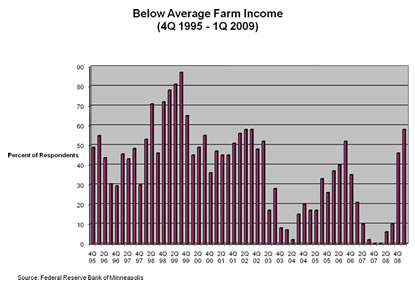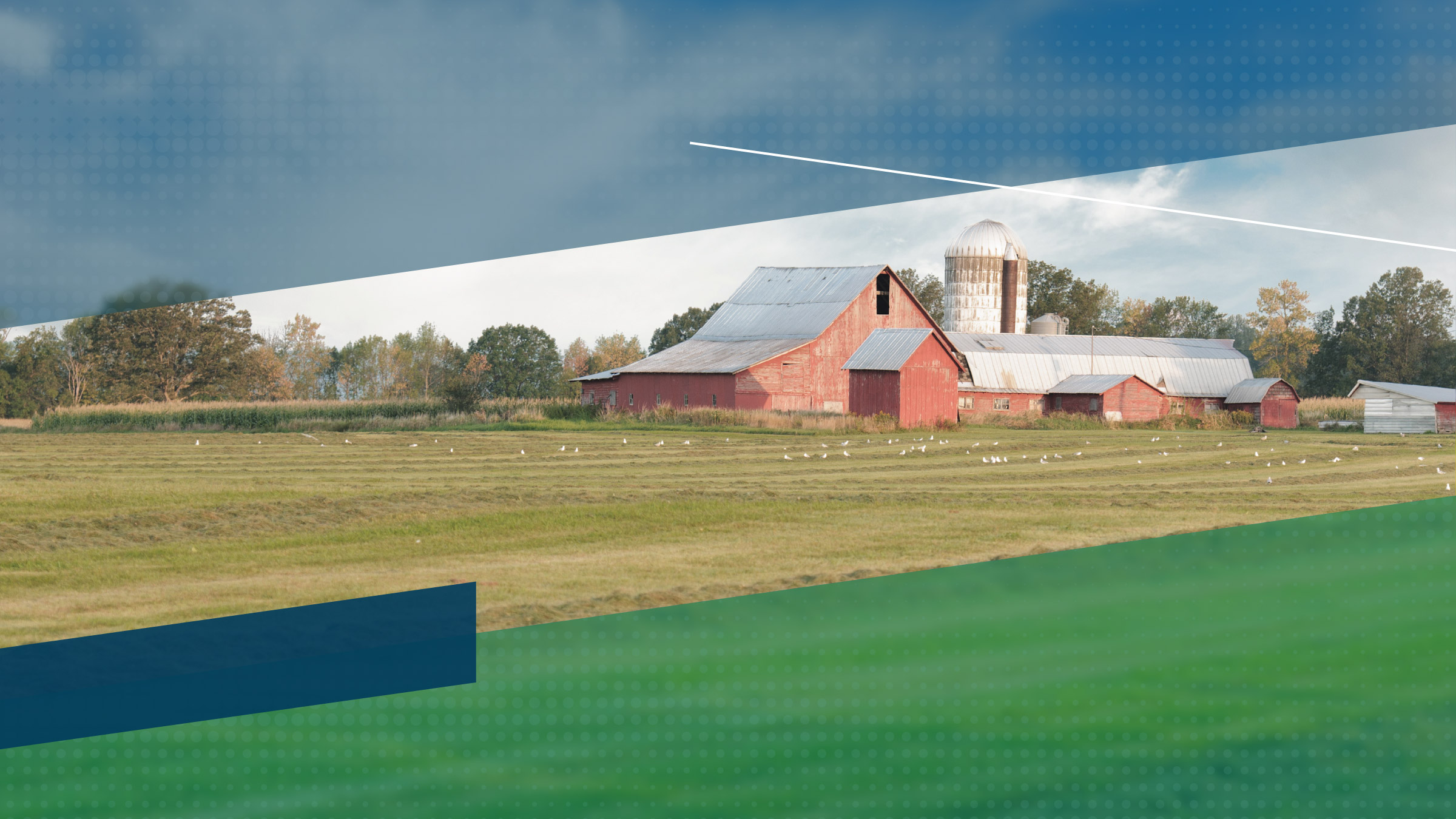“Cash flows are much tougher,” a Minnesota respondent said in the Minneapolis Fed’s first-quarter (April) agricultural credit conditions survey. After a strong 2007 and 2008, many agricultural producers may face a tough 2009. Survey results indicate that farm income, capital expenditures and household spending decreased in the first quarter. Loan demand was flat and collateral requirements increased. Banks reported no shortage of funds, and interest rates decreased from the fourth quarter of 2008. Changes in cash rents and land values were mixed across the district. The outlook is negative—most of the respondents expect decreases in income and capital expenditures in the second quarter of 2009.
Farm income, household spending and capital investment
Farm income decreased in the first quarter, as 58 percent of respondents reported lower-than-normal income and only 15 percent reported income gains. “Lower commodity prices have caused a decrease in farm income,” said a North Dakota lender. Declines that started during the fourth quarter of 2008 continued. Dairy producers were the hardest hit. “The price of milk has fallen to well below break-even prices,” said a Wisconsin respondent. Almost all of the respondents from Wisconsin reported below-average income. Even though nearly a quarter of the Minnesota respondents reported above-average income, this did not offset the 49 percent who reported below-average income.
Producers apparently are responding to lower profits by reducing capital equipment spending. Over half the respondents reported decreased capital expenditures. Meanwhile, household spending decreased slightly, as 37 percent reported decreases and 21 percent reported increases in household spending.
Loan repayments and renewals
Lower profits put a slight crimp on loan repayments, and loan renewals increased. “Ag enterprises are under pressure,” a Minnesota lender said. About a quarter of respondents saw decreased levels of loan repayments, and 19 percent reported increased levels. Meanwhile, 25 percent of respondents saw higher renewals or extensions and only 8 percent saw lower levels.
Demand for loans, required collateral and interest rates
“Farmers are sitting tight right now,” said a respondent from South Dakota. Average demand for loans was stable, with about a quarter reporting decreases and a quarter reporting increases. Loan conditions continued to tighten, as 22 percent of lenders reported increased collateral requirements and only 1 percent reported lowering collateral requirements. Only 4 percent of respondents reported refusing a loan due to a shortage of funds. Both fixed and variable interest rates decreased during the first quarter. Fixed rates dropped about 30 basis points for operating loans, 20 basis points for machinery loans and about 10 basis points for real estate loans. Meanwhile, variable interest rates dropped about 20 basis points.
Cash rents and land values
Cash rents posted solid gains, and land values nudged up slightly from the fourth quarter of 2008. Average district cash rents were up 6 percent for nonirrigated farmland, up 7 percent for irrigated farmland and up 8 percent for ranchland. Average district land values were flat for ranchland, up 1 percent for nonirrigated farmland and up 3 percent for irrigated farmland. However, average ranchland prices dropped 3 percent in South Dakota and 4 percent in dairy-dependent northwestern Wisconsin. (Not only can prices vary from state to state, they can also vary from parcel to parcel. For more detailed information on agricultural prices, see Minnesota Land Economics.)
Outlook
“Farm income will more than likely decline,” a South Dakota lender said. Most lenders agree and expect profits to drop in the second quarter. Only 6 percent expect higher profits. Fifty-eight percent expect capital spending to fall, and 41 percent expect household spending to fall in the second quarter. Loan demand as well as loan renewals and extensions are expected to increase. Tighter credit conditions are anticipated, as 21percent of respondents expect to increase collateral requirements. Agricultural producers are indeed looking at a tough year.
Appendices: State Fact Sheet | State Fact Sheet-Outlook






